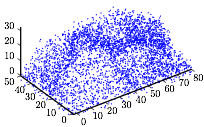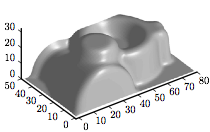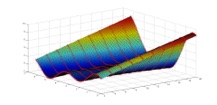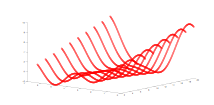Research Overview

Approximation of bivariate functions, sampled along parallel lines
A folklore in oceanography is that “scientists know more about the surface of Mars than they do about the landscape at the bottom of our oceans”. Now, imagine you are sailing in your yacht, while scanning the bottom of the sea with your homemade SONAR. How good can you approximate the surface of the bottom just by having parallel scans of it? Our idea is here


Multi Resolution constructions for high dimensional data
Multi-Wavelets are an interesting variant of wavelets, where the family of orthogonal functions are generated from several "mother wavelets" instead of just one. In this work we generalize this classical concept to more abstract domains, such as high dimensional spaces and graphs. More here

Approximation on manifolds
How can we use classical approximation operators to handle modern data? Our main prototype of operators is the class of subdivision schemes, but not only. As an input we start from functions with values of simple manifolds, like the cone of SPD matrices and continue with more abstract structures. See here
Improving NLM denoising operators
A breakthrough in image denoising has occur with the introduction of Non-Local-Mean operators. These operators average out the noise from an image based upon patches similarity, regardless the actual location of the patch in the image. It turned out that wisely filtering the NLM operators themselves might lead to further, significant improvement in their performances. More here
Synchronization over non-compact groups
The mathematical problem of synchronization deals with finding a set of unknown group elements from their ratios. This problem has roots in robotics, vision, imaging and more. In a case of a compact group, there are several efficient methods to estimate the solution. However, for non-compact groups, most of these methods are no longer valid and often hard to adapt. We address this question for the class of Cartan motion groups by using group contraction, a group theory tool origin from relativistic mechanics. For more details press here





Denoising using subdivision schemes
Denoising curves and surfaces is fundamental in statistics. One can always use, for example, some regression model and fit it to the data. Can we benefit from applying a modern scheme with fractal properties such as subdivision schemes to such data? How to design an advanced tool for signal processing from a classical computer graphic method? the fascinating results open the door for a new approach to more modern statistical challenges. Details are here







